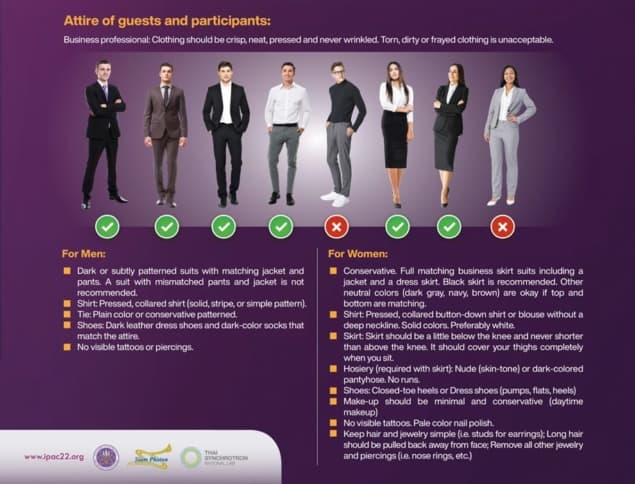
Social media went into meltdown recently from an unexpected source: the 13th International Particle Accelerator Conference, due to be held in Bangkok on 12–17 June.
Delegates planning to attend the opening ceremony – presided by Thai Princess Maha Chakri Sirindhorn – were astonished to be told that only “crisp, neat, pressed and never wrinkled” attire would be permitted. Men were required to wear “dark or subtly patterned suits with matching jacket and pants”, along with “plain colour or conservative patterned ties”, “dark leather dress shoes” and “dark-colour socks”.
Women had it even worse. Trousers were banned, with women required to wear a skirt that was a “little below the knee and never shorter than above the knee”. Make-up had to be “minimal” and “conservative”, with “nude (skin-tone) or dark coloured pantyhose”.
The outcry led to a swift U-turn from the organizers, who say the dress code will now conform to “international standards”. Whether physicists will get away with “scruffy academic”, though, isn’t clear.
Sticking together
Birds can be notoriously picky when foraging for nesting material and can be seen poking or shaking a candidate stick before deciding to add it their growing nest – in effect testing its mechanical properties.
Now researchers in the US have carried out experiments and simulations to model how wooden twigs pack together in a nest-like structure. The team found a certain set of properties that make a twig or collection of twigs become optimal nesting material.
This includes having a nonlinear stiffness as well as undergoing a “quasi-static hysteresis”, referring to how the material maintains equilibrium while undergoing a delayed response to stress. The researchers found that these features arise in a nest-like structure from the interplay of friction as the sticks are arranged.
They reckon their work could improve our understanding of other complex structures such as the formation of underground fungal mycelium networks. Sounds fantastick.
And finally, a letter that Albert Einstein penned to a 12-year-old boy sold this week at auction for a cool $31,250. In 1928 Los Angeles resident Arthur Cohen corresponded with Einstein, in which he asked the physicist about relativity as well as whether space exists outside the universe.
The one-page response by Einstein must have had some effect on Cohen and his interest in science as he would later become the founding director of Washington State University’s Electron Microscopy Center.
